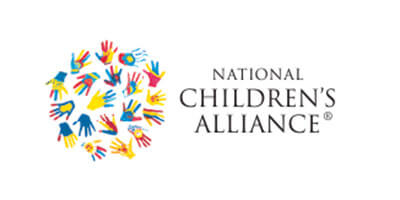
It is highly likely that you know a child who has been or is currently being abused. Statistics show that 1 in 10 children are sexually abused before their 18th birthday. At CAC Lapeer, we believe that adults are responsible for the safety of children and should be proactive against child sexual abuse. Darkness to Light’s Stewards of Children training have provided 5 steps to follow to provide simple and practical actions you can take to prevent, recognize and react to child sexual abuse.
Step 1: Learn the Facts
-
Stranger danger is a myth! 30% of children are abused by family members. Research shows that the greatest risk to children comes from friends and family.
-
As many as 60% of children are abused by people the family trusts.
-
About 35% of victims are 11 years old or younger.
- Nearly 40% are abused by older or larger children.
Step 2: Minimize Opportunity
-
If you eliminate or reduce one-on-one situations between a child and adults, or older youth you will dramatically reduce the risk of sexual abuse. Choose group settings when possible.
-
Think carefully about the safety of situations in which older youth have access to younger children. Make sure that multiple adults are present who can supervise.
-
Set an example by personally avoiding isolated, one-on-one situations with children other than your own.
-
Understand that abusers often become friendly with potential victims and their families by enjoying family activities, earning trust and eventually gaining alone time with children.
-
Monitor children’s internet use. Offenders use the internet to lure children into meeting up, sharing pictures, etc.
If your child participates in sports teams or clubs you should:
- Talk with program directors about the supervision of older youth responsible for the care of younger children.
- Insist on screenings that include criminal background checks, personal interviews, and references for all adults serving children.
- Insist that youth serving organizations train their staff and volunteers to prevent, recognize and react responsibly to child sexual abuse.
- Ensure that youth serving organizations have policies for dealing with suspicious situations and reports of abuse.
One-on-One time with trusted adults can be beneficial for a child. To protect children while nurturing these relationships you should:
- Drop in unexpectedly when the child is alone with an adult or another youth, even if it is a trusted family member. Change pick times or stop in on breaks and lunch hours.
- Make sure outings are observable by you or others.
- Ask adults about the specifics of planned activities before the child leaves your care.
- Talk with the child following the activity. Notice the child’s mood and whether he or she can tell you with confidence how the time was spent.
- Find a way to tell adults who care for children that you and the child are educated about child sexual abuse. Be that direct.
Step 3: Talk About It
-
When we talk to children about our bodies, sex and boundaries it helps them understand that they have the right to say, “NO”. They become less vulnerable and are more likely to tell you if abuse occurs.
-
Teach children that it is “against the rules” for adults to act in a sexual way with them and use examples.
-
Teach children what parts of their bodies should not be touched. Using a bathing suit can help give children a visual.
-
Be sure to mention the abuser may be a trusted family member or friend.
-
Teach children to never give out personal information such as addresses, phone numbers and email addresses.
-
Start early and talk often. Use everyday opportunities to talk about sexual abuse.
- Be proactive. If a child seems uncomfortable around a certain adult, ask why.
Step 4:Recognize the Signs
-
Don’t expect obvious signs when a child is being sexually abused. Signs are often there, but you have to know what to look for.
-
Physical signs of sexual abuse are not common, although redness, rashes/swelling in the genital area, urinary tract infections or other such symptoms should be carefully investigated. Also, physical issues associated with anxiety, such as chronic stomach pain and headaches may occur.
-
Emotional of behavioral signals are more common. These can run from “too perfect” behavior to withdrawal and depression, to anger and rebellion.
-
Sexual behavior and language that are not age appropriate can be a red flag.
-
Be aware in some children there are no signs at all.
-
If you find physical signs that you suspect are sexual abuse, have the child physically examined immediately by a professional.
-
Use a Children’s Advocacy Center whenever possible for physical exams and psychological evaluation and treatment. Children’s Advocacy Centers provide trauma sensitive, child-friendly, safe places for families to seek help. If you know of a family in need outside of Lapeer County, contact the National Children’s Alliance or call 1-800-239-9950 to find a center near you. You can also call Child Protect Services or law enforcement in your area.
Step 5: React Responsibly
- Disclosure of sexual abuse means a child has chosen you as the person he or she trusts enough to tell. It is THE MOMENT when children learn whether others can be trusted to stand up for them.
- Very few reported incidents of child sexual abuse are false.
- DON’T OVERREACT- If a child breaks an arm or runs a high fever, you know to stay calm and where to seek help because you’ve mentally prepared yourself. Reacting to child abuse should be the same.
- When you react to a disclosure with anger or disbelief, the child will likely feel more guilt and shame, shut down, or change and retract the story.
- Offer Support- Believe the child and make sure they know that you do.
- Thank the child for telling you and praise their courage.
- Encourage the child to talk, but don’t ask leading questions about details. Leading questions can alter a child’s memory of events. Instead ask open ended questions such as, “What happened next?”
- Assure the child it is your job to protect them and you intend to do so.
- Try not to show anger toward the offender, who may be someone the child loves. This will only add to the burden on the child.








